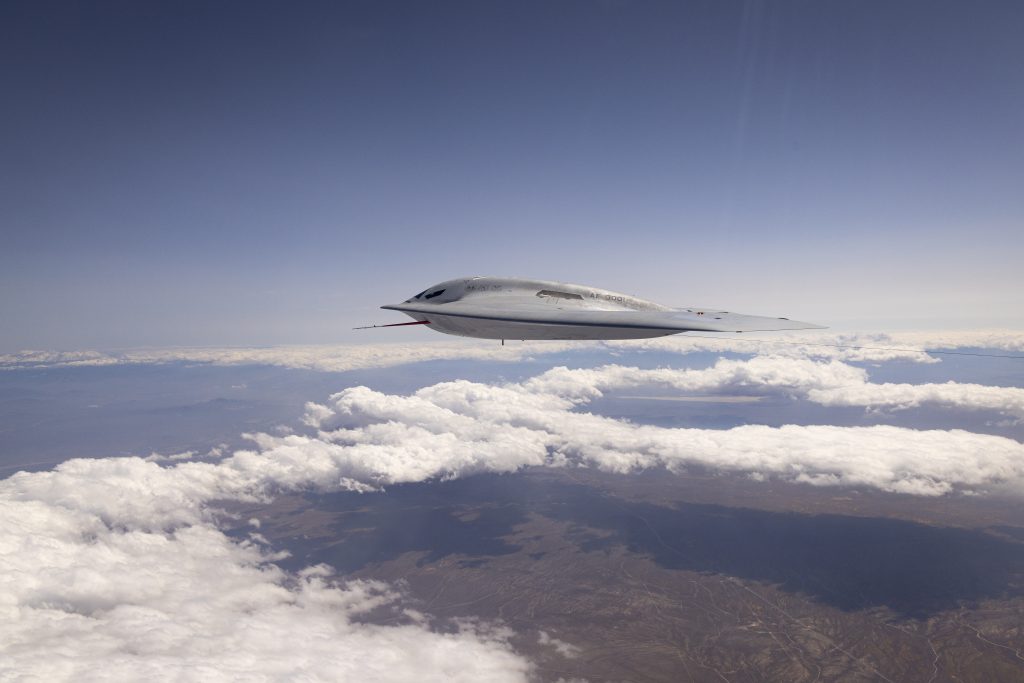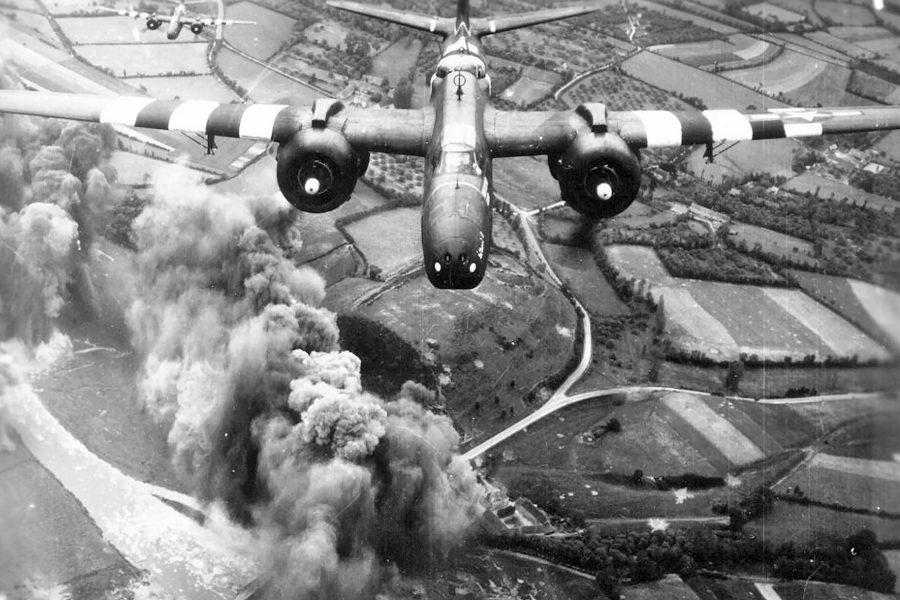As world leaders gathered at Normandy last week to mark the 80th anniversary of the D-Day invasion, it is important to recall that America was not ready for that war. It took two and a half years to generate the combat power necessary to invade Europe, plus another year to finally defeat Nazi Germany. Victory was far from certain during key phases of the conflict.
Today, America is once again inadequately postured to confront burgeoning national security challenges. China is building up forces aggressively in the Pacific; Russia is making gains in its war on Ukraine; Iran is pursuing nuclear ambitions and proxy wars; North Korea is threatening nuclear war; and non-state actors continue to destabilize key regions. However, post-Cold War budget cuts, two decades of strategic distraction in Afghanistan and Iraq, and a succession of aggressive budget cuts have yielded a set of U.S. military capabilities and capacity that fall short of what the threat environment demands. This is especially true for Air Force fighters and bombers—two foundational elements of U.S. national security.
The ability to achieve air superiority when and where it is needed is an essential condition for any successful military operation, regardless of domain. That is why Air Force fighters are so important.
Likewise, a commander’s ability to take the fight to the enemy depends on America’s long-range attack capability—which is predominantly an Air Force bomber mission. They strike targets deep behind enemy lines, disable command-and-control networks, eliminate production centers, and damage materiel, logistics, and enemy combat forces. Bombers, in addition to submarines and land-based ICBMs, also comprise one leg of America’s nuclear triad. Combined, air superiority and long-range attack deter adversaries in times of peace and yield war-winning effects during conflict.
Both air superiority and long-range attack missions are established military imperatives. In World War II, allied forces would not have made it past the landing beaches had they been under attack from the sky. Long-range strikes played a crucial role throughout the war, degrading the German war machine with debilitating attacks against petroleum refineries, production facilities, rail lines, and more. The reason the war in Europe ended just eleven months after D-Day was that air power had already inflicted so much damage over the years, that ground forces were fighting an already degraded opponent.
The same was true in Operation Desert Storm in 1991. A monthlong air campaign set conditions such that ground forces needed just 96 hours to bring Saddam Hussein to his knees.
Today, in Ukraine, neither side controls the sky, and neither can mount a strategic air attack campaign. As a result, fighting is bogged down in modern-day World War I-style trench warfare. This is the price nations pay if they cannot control the sky and use that dominance to project decisive strikes. Surface forces slaughter each other for incremental daily gains measured in meters.
Following such a course is a recipe for disaster. Yet given the precarious state of U.S. airpower today, it could be what is in store if the U.S. faces a major power, especially China, in combat in the future. Lacking major investment today, commanders will lack the capacity and capability they will need to fight a peer foe.
The decay began after the fall of the Soviet Union in 1991, when the Pentagon cut Air Force combat capacity by half. In continued over the decades that followed, as fighter and bomber inventories shrank and nonstop operational demand in the Middle East, the Balkans, and elsewhere burned out remaining aircraft. At the same time, key fighter and bomber modernization programs were cut short. America built less than half the F-22s required, halted B-2 bomber production at 21, slowed F-35 production, and flew aircraft into their sixth decade and beyond. Fiscal caps imposed by the 2011 Budget Control Act strained Air Force fighters and bombers to the core.
Air Force leaders sounded the alarm six years ago, declaring that “The Air Force is too small for what the nation is asking us to do.” Yet still the cuts continued.
Now, with threats on the rise around the globe, the nation faces a choice: modernize or risk the nation’s future security. Said more bluntly, America may lose its next major war it fights for want of capable, properly sized combat airpower.
To avert this outcome, modernization is essential. This includes:
- Buying more F-35 and B-21 aircraft as rapidly as possible
- Developing and fielding autonomous, uncrewed Collaborative Combat Aircraft (CCA)
- Building the Next Generation Air Dominance (NGAD) family of systems
- Investing in modern munitions in volume
- Fixing the chronic pilot shortfall
- Stop shortchanging operations accounts so that personnel are adequately trained, and mission equipment is sustained at a high level of readiness.
A credible force can deter war, but a hollow force—one that lacks the capacity to fight a peer adversary—invites risk. Adversaries know when America is weak and will opportunistically push against our interests.

However, modernization requires resources, and that funding is in short supply given new budget caps, continued high inflation, and the sheer scale of modernization necessary to reset decades of neglect. The factors risk seeing an already a fragile set of Air Force combat airpower capabilities grow more precarious. The Air Force reduced its fiscal 2025 procurement budget request by $1.6 billion versus fiscal 2024, because the resources simply were not available in the topline dictated by the Pentagon. According to experts, the defense budget caps amount to a $47 billion cut to the Department of Defense in fiscal 2025 versus previously planned toplines.
Nor are things set to improve any time soon. Secretary of the Air Force Frank Kendall explained: “You’re going to see our five-year plan … and what you’re going to see is that life gets a lot harder as we get past ’25.”
Given what is at stake, Congress must repeal the budget caps and prioritize Air Force modernization. The joint force simply is not viable without what Air Force fighters and bombers bring to the fight. Nor can these deferred bills be ignored forever. As Senate defense appropriations subcommittee Chairman Sen. Jon Tester (D-Mont.) knows well, the cost of postponing necessary investments is always higher: “Either pay me now or pay me later,” he has said. “It’s going to cost a hell of a lot more later.”
Ranking member of the Senate Armed Services Committee Sen. Roger Wicker (R-Miss.) is calling for higher defense spending. “Our current defense investment does not meet the moment,” he said, releasing a plan that deserves serious bipartisan attention. “The emerging Axis of Aggressors is undermining U.S. interests across the globe.”
On top of more funding, the Department of Defense also needs to embrace cost per effect analysis to ensure money received is directed towards achieving best value. It comes down to investing in systems that deliver the greatest effect at the lowest cost, thus buying more defense capability and capacity for each dollar invested.
There is significant room for improvement in this regard. Consider the long-range strike mission. While deep attack is officially and traditionally an Air Force mission achieved with bomber and fighter aircraft, the Pentagon has funded the Army and Navy to develop long-range missiles that will cost $50 million per shot—an unsustainable figure given that aim points in a major theater war will likely exceed six figures. Stealthy penetrating fighters and bombers can achieve greater effects at a fraction of that cost, return to base, and do it again the next day.
Nor is this the only example. Consider the inefficiency of the Army trying to develop its own organic intelligence, surveillance, and reconnaissance capability, comprising both aircraft and satellites, to guide those high-priced long-range missiles. The Space Force, meanwhile, is developing that same capability for the entire joint force.
In his remarks commemorating the D-Day anniversary, President Biden noted that “There are things that are worth fighting and dying for: Freedom is worth it; democracy is worth it; America is worth it; the world is worth it—then, now, and always.”
While some might call that sentimental hyperbole, the lessons of the past tell us otherwise. World War II put existential realities on the line. China, Russia, and the rest of the threats we face pose severe risks today.
As we once again face these challenges, some of them truly existential, let us resolve to rise to the occasion as did our nation nearly a century ago. We must invest now to ensure American air superiority and long-range strike capability are there when we need them.
“There is only one thing we require here to do the job—the job that will hurt the enemy the most,” noted air commander Ira Eaker on the eve of D-Day. “That is an adequate force.”
Those words still ring true, 80 years later. Heed them.
Douglas A Birkey is executive director of the Mitchell Institute for Aerospace Studies.
